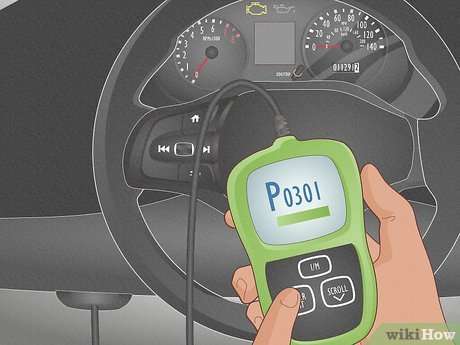The dreaded engine light illuminating on your dashboard, coupled with a car that feels like it’s doing the jitterbug, is enough to send any driver into a spiral of worry. What could be causing this unsettling combination of symptoms? The simultaneous occurrence of an illuminated engine light and a shaking car is rarely a good sign, suggesting a potentially serious underlying issue that demands immediate attention. Diagnosing the root cause of the problem when you experience an engine light on car shaking can be complex, requiring a systematic approach to identify the culprit and prevent further damage.
Common Culprits Behind the Shaking and the Light
Several factors can contribute to both a lit-up engine light and a shaking car. Let’s explore some of the most frequent offenders:
- Misfiring Engine: This is perhaps the most common cause. A misfire occurs when one or more cylinders in your engine fail to ignite the air-fuel mixture properly. This can be due to faulty spark plugs, ignition coils, fuel injectors, or even vacuum leaks.
- Faulty Spark Plugs: Worn or damaged spark plugs can’t ignite the fuel mixture efficiently, leading to misfires and a rough-running engine.
- Bad Ignition Coils: Ignition coils provide the high voltage needed to create a spark at the spark plugs. A failing coil can cause intermittent misfires.
- Clogged Fuel Injectors: Dirty or clogged fuel injectors can restrict fuel flow to the cylinders, causing a lean condition and misfires.
- Vacuum Leaks: Vacuum leaks can disrupt the air-fuel mixture, leading to engine misfires and a rough idle.
- Catalytic Converter Problems: A failing catalytic converter can cause back pressure, leading to engine problems and shaking.
- Transmission Issues: In some cases, transmission problems can manifest as shaking, especially during gear changes, and trigger the engine light.
Diagnostic Steps: What to Do When the Shaking Starts
When you experience an engine light on car shaking, the following steps can help you begin diagnosing the issue:
- Note the Circumstances: When does the shaking occur? Is it constant, or only at idle or during acceleration? Knowing the specific conditions can provide valuable clues.
- Check for Obvious Issues: Look for any visible damage or leaks under the hood. Check the spark plug wires and ignition coils for any signs of wear or damage.
- Scan the Error Codes: Use an OBD-II scanner to retrieve the error codes stored in the car’s computer. These codes can pinpoint the specific problem area.
- Don’t Ignore It: Continuing to drive with a shaking car and an illuminated engine light can cause further damage to your engine or other components.
Seeking Professional Help
While you can perform some basic troubleshooting yourself, it’s often best to seek professional help from a qualified mechanic. They have the expertise and specialized equipment to diagnose the problem accurately and perform the necessary repairs.
Comparison Table: DIY vs. Professional Repair
| Feature | DIY (Do-It-Yourself) | Professional Mechanic |
|---|---|---|
| Cost | Lower initial cost | Higher initial cost |
| Expertise | Limited to your knowledge | Extensive training and experience |
| Tools & Equipment | Requires personal investment in tools | Access to specialized tools and equipment |
| Warranty | No warranty on work | Warranty on parts and labor |
| Risk of Damage | Higher risk of damaging the vehicle | Lower risk of damaging the vehicle |
Remember, addressing the issue promptly is crucial to prevent further damage and ensure your safety on the road. The presence of an engine light and a shaking car indicates that something is wrong, and ignoring it could lead to costly repairs down the line. Therefore, to summarize, if you notice an engine light on car shaking, it is essential to act quickly and systematically to determine the source of the problem and get it resolved by a qualified mechanic.
PREVENTATIVE MAINTENANCE: KEEPING THE SHAKES AWAY
While unforeseen mechanical issues can arise, proactive maintenance can significantly reduce the likelihood of experiencing the dreaded “engine light on, car shaking” scenario. Regular servicing, including spark plug replacement, fuel injector cleaning, and air filter changes, can keep your engine running smoothly and efficiently. Think of preventative maintenance as an investment in your vehicle’s long-term health, preventing small problems from snowballing into major headaches. Ignoring routine upkeep can lead to a buildup of carbon deposits, clogged fuel systems, and ultimately, those unsettling shakes and warning lights.
SIMPLE STEPS FOR A SMOOTHER RIDE:
– Follow the Manufacturer’s Maintenance Schedule: This is your bible for keeping your car in top shape.
– Use High-Quality Fuel: Cheap fuel can contain contaminants that clog fuel injectors.
– Change Your Oil Regularly: Clean oil lubricates the engine and prevents wear and tear.
– Inspect and Replace Spark Plugs as Needed: Refer to your owner’s manual for recommended intervals.
– Address Minor Issues Promptly: Don’t ignore small noises or vibrations, as they can be early warning signs.
BEYOND THE ENGINE: OTHER POTENTIAL SOURCES OF VIBRATION
While the engine is often the primary suspect when your car is shaking, remember that other components can also contribute to vibrations. Worn tires, damaged suspension components, and even unbalanced wheels can cause noticeable shaking, especially at higher speeds. These issues may not necessarily trigger the engine light immediately, but they can put additional stress on the engine and eventually lead to related problems. A thorough inspection of your vehicle’s tires, suspension, and wheels is crucial for a comprehensive assessment of the shaking issue.
Therefore, while the combination of an engine light and shaking car is often associated with engine misfires or fuel delivery issues, a holistic approach to diagnostics is always recommended. Don’t tunnel vision on the engine alone; consider the entire vehicle system to uncover the true root cause of the problem. By staying vigilant with your vehicle’s maintenance and addressing any unusual symptoms promptly, you can enjoy a smoother, safer, and more reliable driving experience for years to come.





